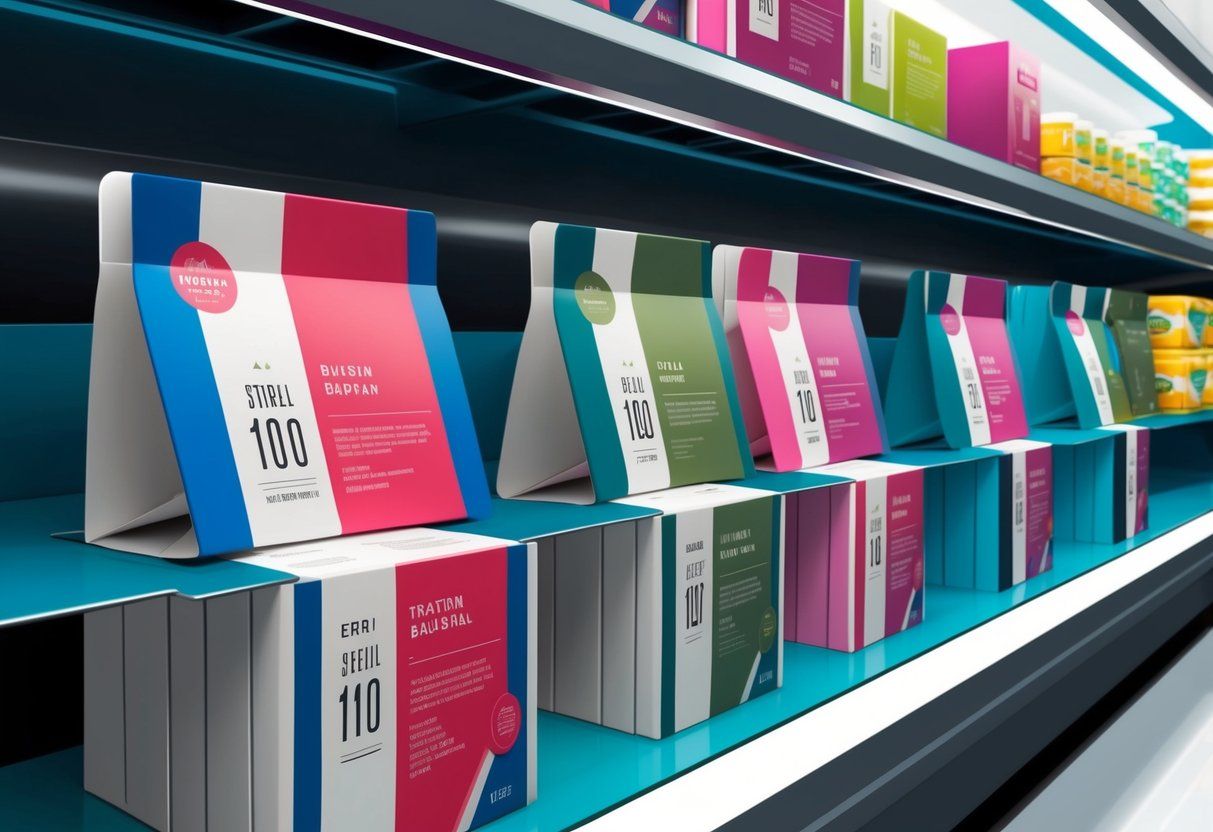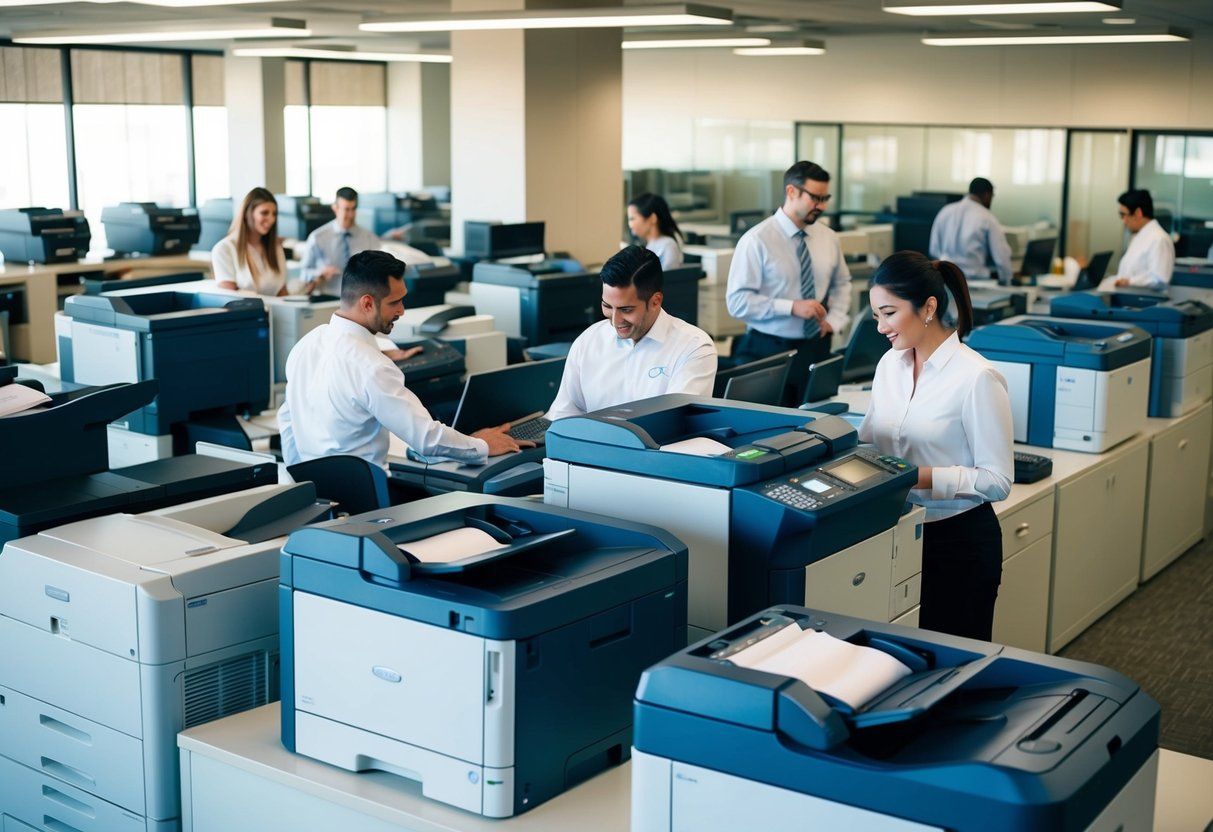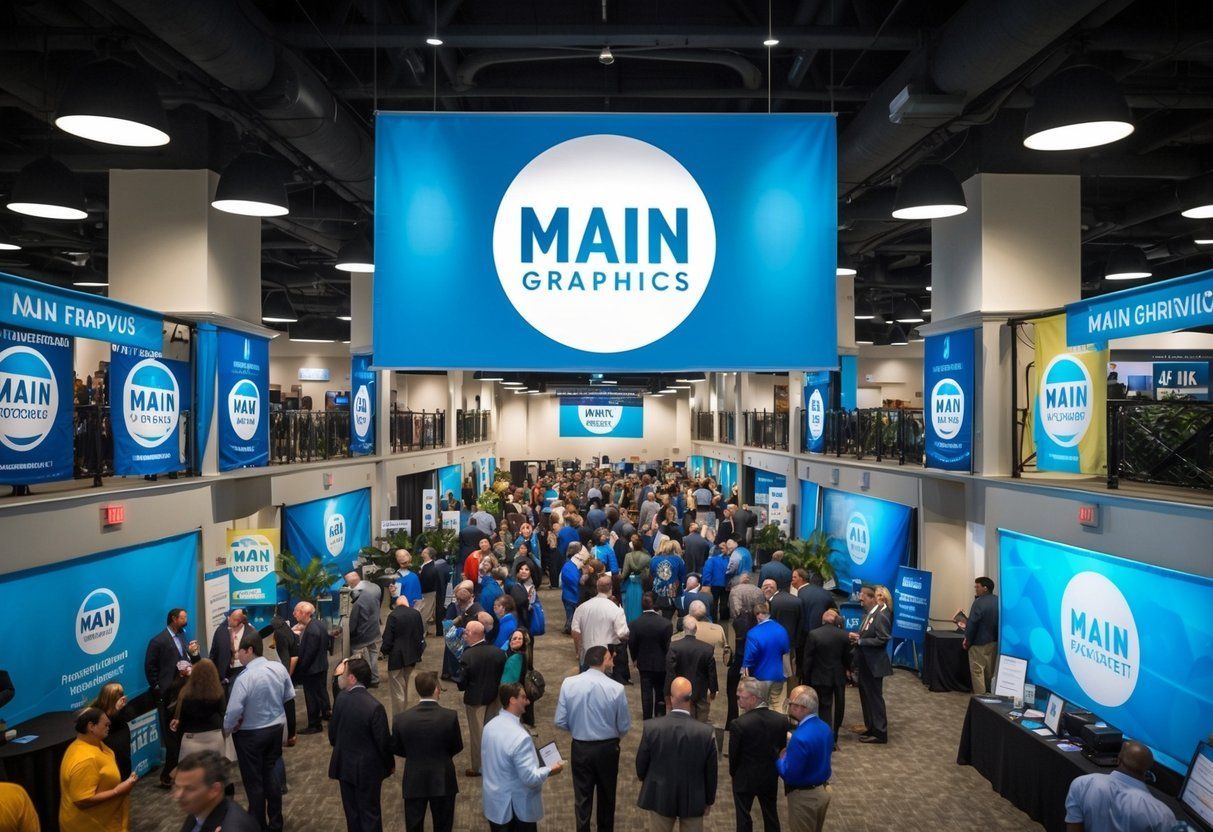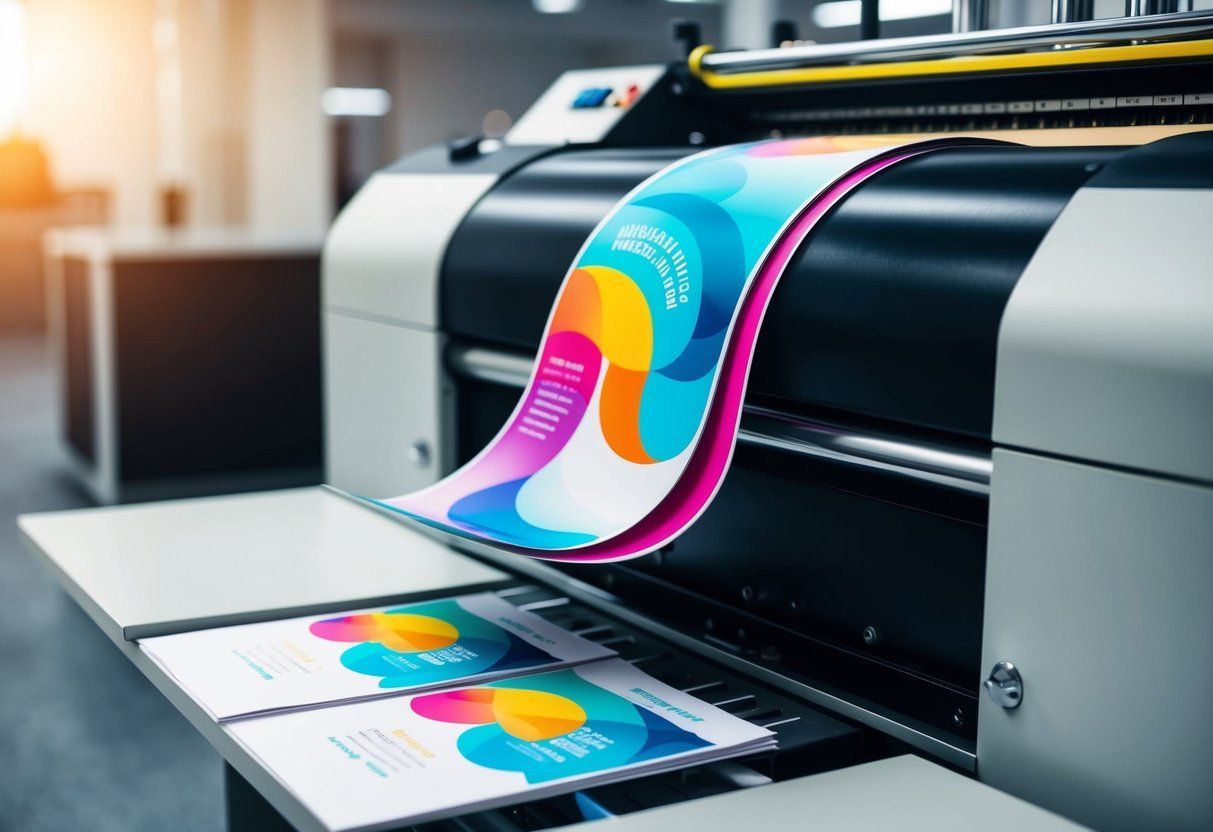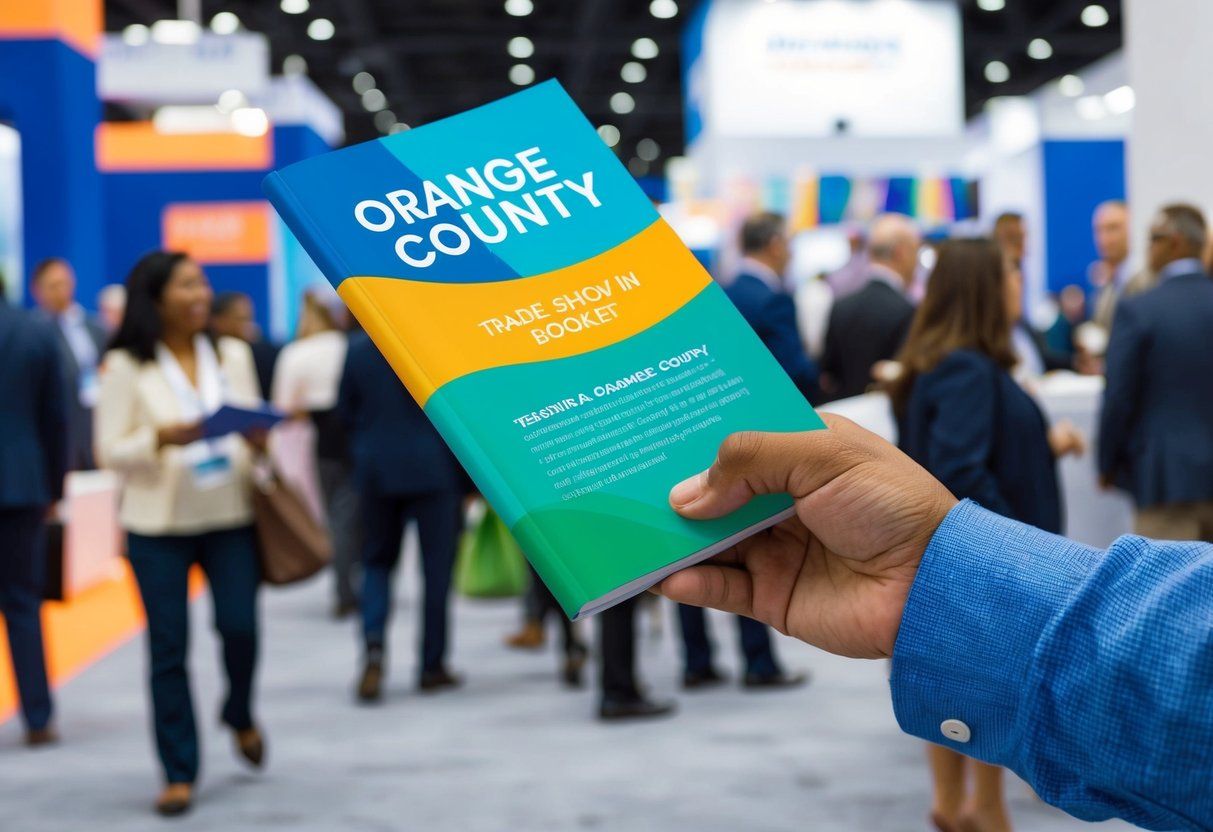Sustainability in Printing: Main Graphics’ Commitment to Green Initiatives in Orange County
Sustainability is becoming key in many industries, and printing is no exception.
Main Graphics is leading the way in Orange County by adopting green printing initiatives that not only benefit the environment but also support local businesses.
Their commitment to sustainability includes using eco-friendly materials, minimizing waste, and implementing energy-efficient practices.
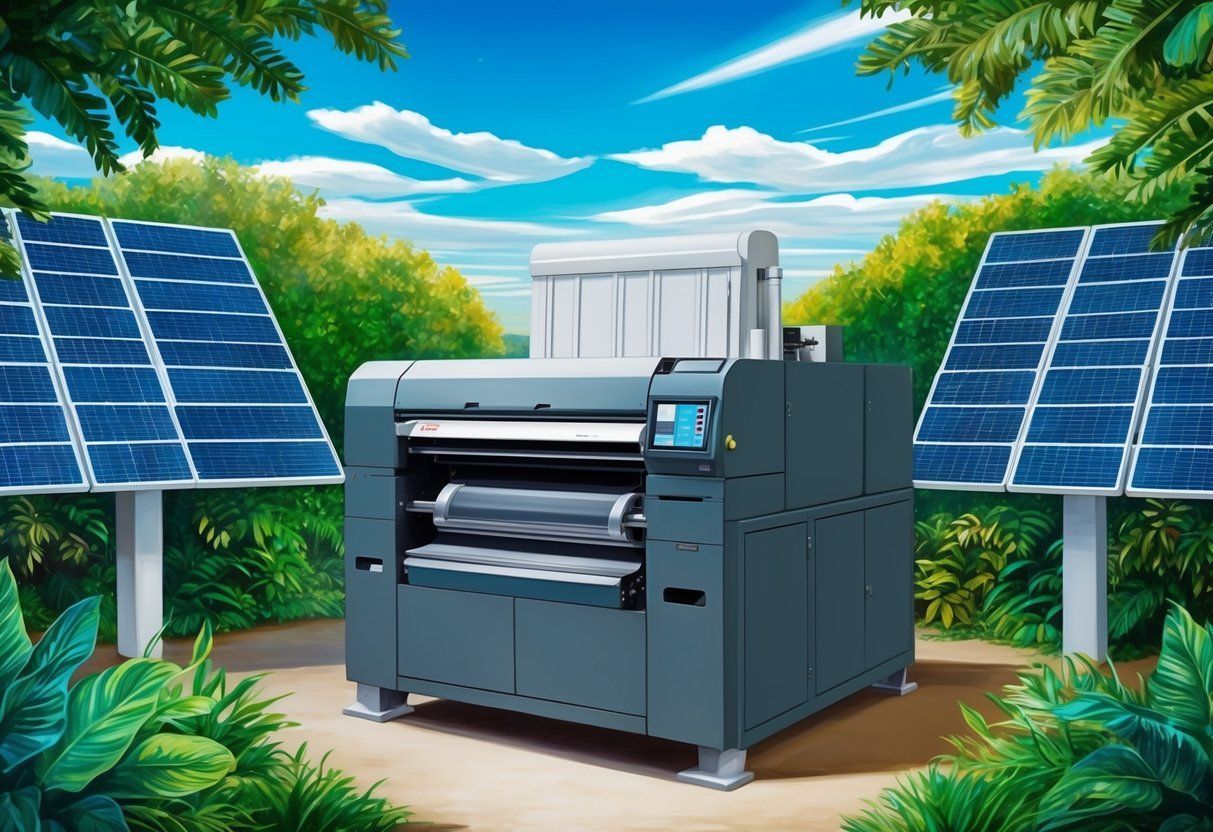
With rising awareness of environmental issues, many consumers prefer companies that prioritize green practices.
Main Graphics understands this shift and actively promotes sustainable printing solutions tailored to the needs of their clients. By choosing them, businesses contribute to a healthier planet while enjoying high-quality printing services.
As the demand for eco-friendly printing grows, Main Graphics stands out in Orange County by offering innovative solutions that meet the latest sustainability standards. This approach not only enhances their brand’s reputation but also sets a standard in the industry for others to follow.
Key Takeaways
- Main Graphics leads green printing initiatives in Orange County.
- Sustainable practices reduce waste and use eco-friendly materials.
- Choosing green printing supports both the environment and local businesses.
The Importance of Sustainability in the Printing Industry
Sustainability is vital for the printing industry. It helps reduce the environmental footprint and supports the push towards eco-friendly practices.
The industry faces pressure from consumers and climate challenges that influence how printing companies operate.
Understanding the Environmental Impact
The printing industry can significantly impact the environment. Traditional printing processes often use chemicals and materials that harm ecosystems. These include inks made from petroleum and paper sourced from unsustainable forestry practices.
Sustainable printing practices lower this impact. This involves using eco-friendly inks, recycled paper, and energy-efficient machinery.
By adopting such methods, companies can reduce their carbon footprint. It leads to cleaner air and water, benefiting local communities and wildlife.
Rising Consumer Awareness
Consumer awareness about environmental issues is growing. Many people now prefer products from companies committed to sustainability. This shift has made eco-friendly printing a competitive advantage.
Businesses that adopt sustainable practices can attract more customers. They can showcase their commitment through certification marks like the Forest Stewardship Council (FSC) label. These certifications assure consumers that products are responsibly sourced and produced.
Even small changes can lead to a sustainable reputation. Printing companies that highlight their green initiatives can build trust with customers and enhance brand loyalty.
Climate Change and the Role of Printers
Climate change is a pressing global issue. Printing companies have a unique role in this challenge. They can contribute to climate solutions by reducing waste and improving efficiency.
Initiatives like digital printing and print-on-demand services minimize resource use. These methods help decrease overproduction and waste.
Furthermore, using renewable energy in production can drastically lower greenhouse gas emissions.
By leading the way in sustainability, printers not only reduce their environmental impact but also inspire other industries to follow. Embracing green practices is not just beneficial for business; it’s essential for a healthier planet.
Green Printing Technologies and Practices
Green printing technologies focus on reducing waste, conserving resources, and using materials that are less harmful to the environment. These innovations are crucial for businesses looking to adopt sustainable practices.
This section explores advances in digital printing, sustainable substrates, and eco-friendly inks.
Digital Printing Advancements
Digital printing has revolutionized the printing industry by reducing waste and energy consumption. Traditional methods often require extensive setup times and large print runs.
In contrast, digital printing allows for shorter runs and quick changes without compromising quality.
Benefits of Digital Printing:
- Less Waste: Only the needed quantity is produced.
- Lower Energy Use: Requires less power compared to traditional printing.
- Customization: Easily adjusts designs for specific customer needs.
These factors make digital printing a better choice for businesses focused on sustainability.
Innovations in Sustainable Substrates
The choice of substrate plays a significant role in green printing. New materials that are recyclable, biodegradable, or made from recycled content are increasingly available. Companies are now using:
- Recycled Paper: Reduces demand for virgin materials.
- Biodegradable Films: Break down naturally.
- Plant-Based Materials: Such as bamboo and hemp.
These substrates not only minimize environmental impact but also maintain quality. Using sustainable substrates shows a commitment to eco-friendly practices.
Eco-Friendly Inks and Consumables
The type of ink used is vital for green printing. Traditional inks can contain harmful chemicals. In contrast, eco-friendly inks, such as soy-based and vegetable-based inks, are safer for the environment.
These inks have several advantages:
- Lower VOCs: Volatile organic compounds are reduced, improving air quality.
- Better Color Quality: They offer vibrant colors with less environmental impact.
- Easier Cleanup: Requires less harsh solvents for cleaning.
Using eco-friendly inks supports companies aiming to improve their sustainability efforts. These advancements showcase how the printing industry can evolve to meet environmental standards.
Materials and Consumption
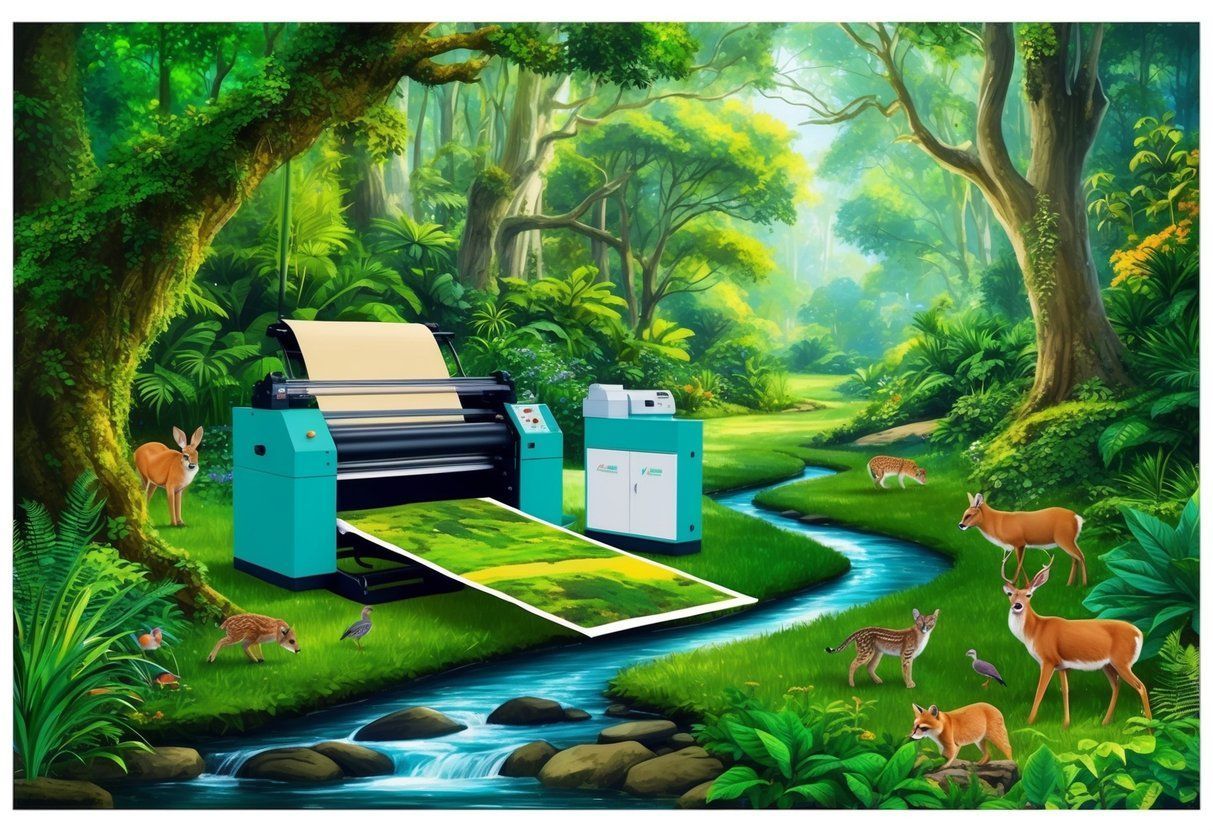
Main Graphics emphasizes the importance of sustainable materials and responsible consumption in printing. This commitment involves using quality recycled paper, reducing harmful chemicals, and minimizing resource use in every aspect of their operations.
Quality Recycled Paper Usage
Main Graphics prioritizes the use of high-quality recycled paper in its printing processes. This approach helps reduce waste and cut down on the demand for new trees.
The company sources recycled paper that meets industry standards, ensuring durability and print quality.
Using recycled paper can significantly lower energy consumption. It takes less energy to produce recycled paper compared to virgin paper.
Emphasizing recycled products shows that Main Graphics is dedicated to eco-friendly practices while delivering excellent results for clients.
Reducing Volatile Organic Compounds
Another important aspect of Main Graphics’ green initiatives is the reduction of volatile organic compounds (VOCs) in its printing processes. VOCs are chemicals found in many traditional inks and solvents that can harm both health and the environment.
To minimize VOCs, Main Graphics chooses inks that are low in these compounds. By doing so, they provide safer printing options for customers while decreasing air pollution.
This effort is crucial in creating a healthier workspace for employees and customers alike.
Minimizing Water and Energy Usage
Main Graphics continuously works to minimize both water and energy usage in their printing operations. They implement technologies and practices that enhance energy efficiency, leading to lower consumption without compromising quality.
Water conservation techniques are also vital. The company uses water-based inks and cleaning solutions that require less water during the printing process.
By focusing on these sustainable practices, Main Graphics reduces its environmental footprint while maintaining high-quality standards.
Economic and Social Aspects of Sustainable Printing
Sustainable printing not only supports the environment but also brings economic benefits and social awareness. It creates cost efficiency, educates stakeholders, and enhances brand image among consumers.
Cost Savings and Efficiency
Sustainable printing can lead to significant cost savings for businesses. By using eco-friendly materials and processes, companies can reduce waste and lower their resource consumption.
For example, digital printing often produces less waste compared to traditional methods. This efficiency means less paper and ink are wasted.
Implementing sustainable practices can also lower energy costs.
Companies using energy-efficient machines may find their utility bills drop. Over time, these savings can accumulate, showing businesses that going green is a smart financial decision.
Educating Stakeholders on Sustainability
Educating stakeholders is essential for promoting sustainable printing. This group includes employees, clients, and suppliers. They all play a part in implementing green practices.
Workshops and training sessions can raise awareness about the benefits of eco-friendly products. These sessions can highlight how sustainable choices lead to better cost management and customer satisfaction.
Informed stakeholders are more likely to support and advocate for sustainable initiatives. Better consumer awareness can drive demand for eco-friendly products. This creates a cycle where education leads to increased sustainability in printing.
Building a Sustainable Brand Image
A strong commitment to sustainable printing can enhance a company’s brand image. Consumers today are increasingly aware of environmental issues. They often prefer brands that take steps toward sustainability.
By promoting eco-friendly products, businesses can attract more customers. A clear environmental policy can set a company apart from competitors.
This differentiation can increase customer loyalty and trust.
Sustainable practices can also lead to positive public relations. Sharing initiatives through marketing channels can build transparency. This openness helps customers feel connected to brands that prioritize the environment.
Regulatory Compliance and Certifications
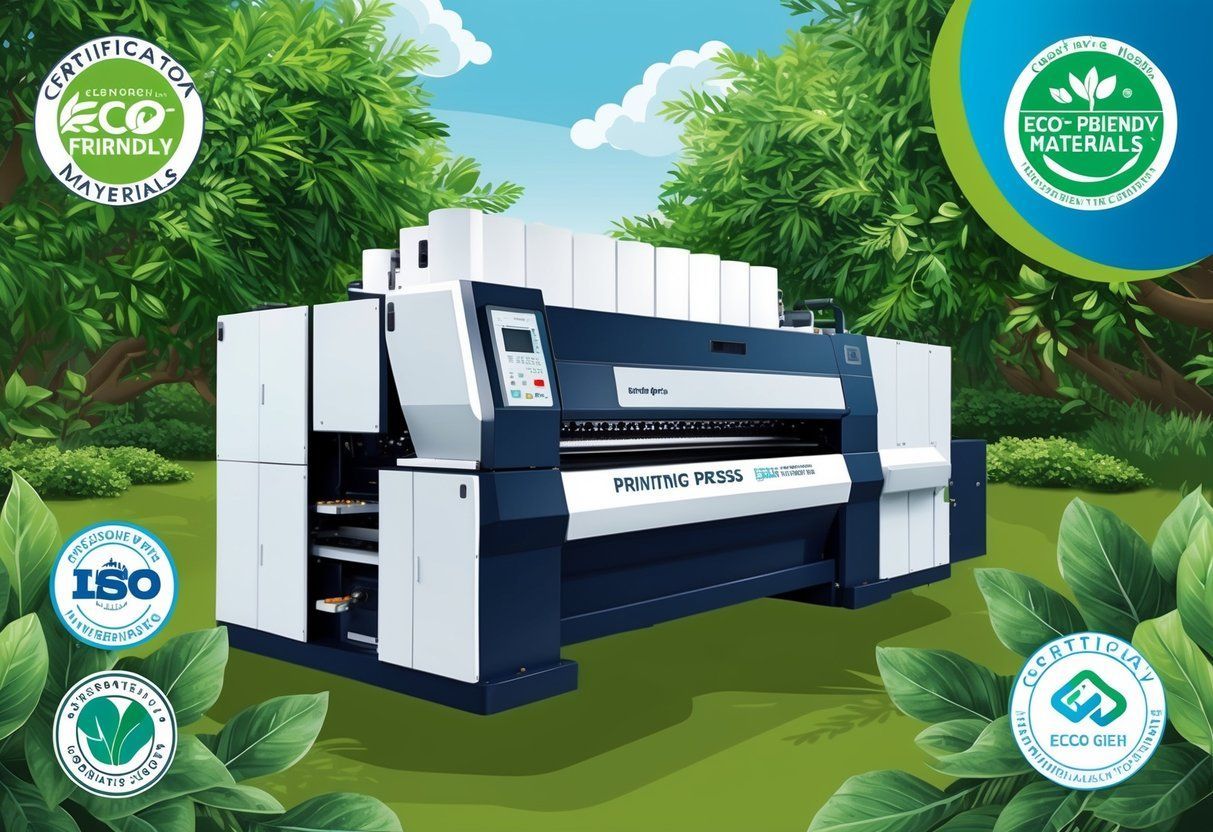
Regulatory compliance and certifications play a crucial role in sustainable printing. Main Graphics ensures that its processes and materials align with strict eco-friendly guidelines. This commitment helps to promote responsible practices within the printing industry.
Eco Labels and Standards
Eco labels and standards guide businesses in adopting more sustainable practices. These labels are important for consumers who want to make informed choices about products.
Some common eco-labels include:
- Green Seal : Focuses on reducing environmental impact.
- Energy Star : Recognizes energy-efficient products.
- LEED Certification : Applies to buildings that meet sustainability criteria.
These labels assure customers that printing companies adhere to rigorous environmental standards. Compliance with these standards not only benefits the planet but also enhances the company’s reputation.
FSC-Certified and Other Green Certifications
FSC (Forest Stewardship Council) certification is vital for companies using paper and wood products. This certification ensures that materials come from responsibly managed forests.
Main Graphics emphasizes the use of:
- FSC-Certified Paper : Guarantees sustainable sourcing.
- Recyclable Materials : Reduces waste and promotes recycling.
In addition to FSC certification, companies can pursue other green certifications, such as EcoCert or SFI (Sustainable Forestry Initiative). These certifications demonstrate a strong commitment to sustainable practices in printing and show that the company is a responsible choice for eco-conscious clients.
Incorporating Renewable Energy and Reducing Emissions
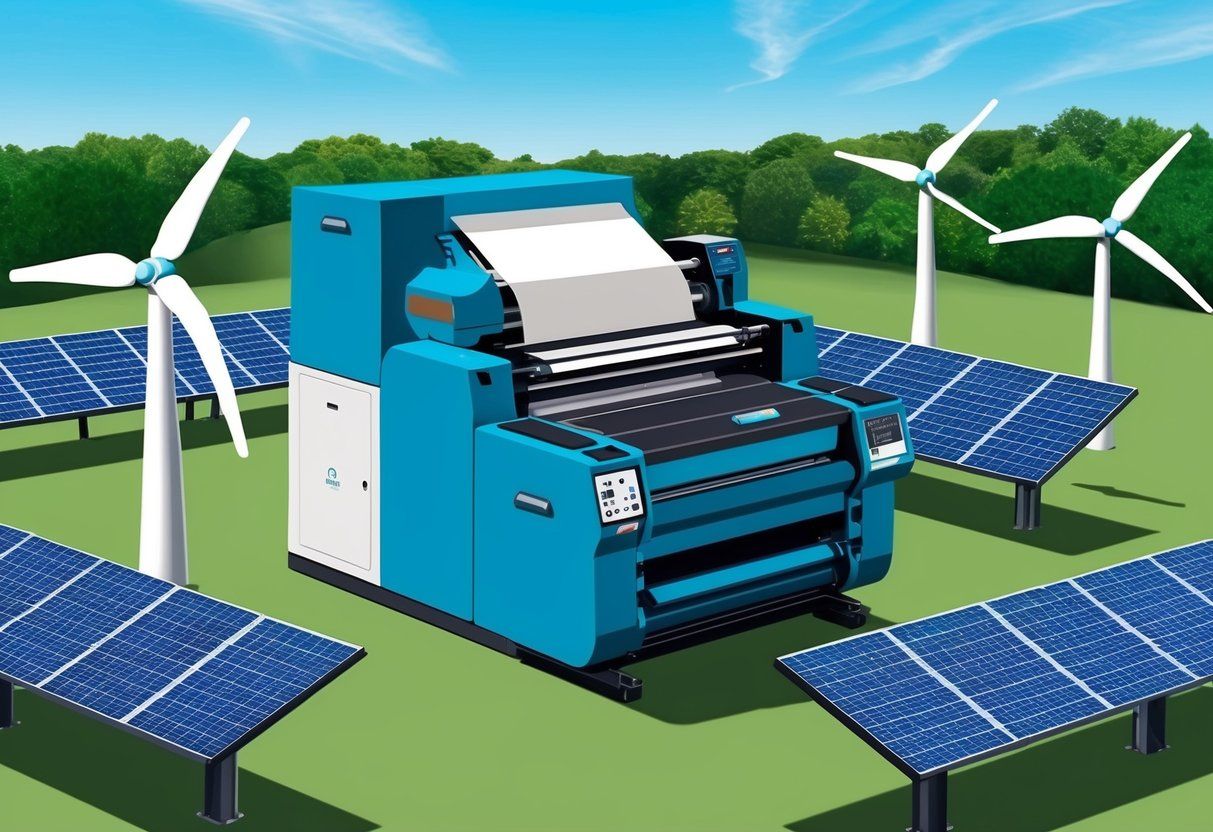
Main Graphics focuses on using renewable energy and cutting down carbon emissions to make printing more sustainable. By investing in better equipment and renewable energy sources, they lead the way in eco-friendly practices.
Adopting Energy-Efficient Equipment
Main Graphics prioritizes energy-efficient equipment to lower energy use in their printing processes. This type of equipment can reduce energy consumption significantly, which directly cuts down on carbon emissions.
Examples of energy-efficient equipment include modern printers and presses that come with energy-saving features. These machines not only consume less power but also often produce less waste.
Using this technology helps Main Graphics operate in a more eco-friendly manner. As a result, they are able to meet their sustainability goals while still delivering high-quality prints.
Leveraging Renewable Energy Sources
Main Graphics invests in renewable energy sources such as solar and wind power. By transitioning to these energy options, they minimize their reliance on fossil fuels, which helps reduce carbon emissions.
Implementing solar panels on their facility is one effective strategy. This allows them to generate clean energy on-site and decrease their overall carbon footprint.
Additionally, Main Graphics encourages the use of green energy from local suppliers. This commitment to renewable energy not only supports their sustainability efforts but also contributes to a healthier environment in Orange County.
Waste Management and Recycling in Printing
Effective waste management and recycling are essential for promoting sustainability in the printing industry. By implementing specific strategies, printing companies can significantly reduce their environmental impact and contribute to a circular economy.
Effective Waste Reduction Strategies
Printing companies use various methods to reduce waste. They often implement digital printing, which produces less excess material than traditional methods.
- Print-on-demand reduces inventory waste by creating products only as requested.
- Efficient workflow designs minimize leftover materials during the printing process.
- Regular training for employees on sustainable practices boosts awareness and encourages waste reduction.
These strategies emphasize the importance of thoughtful planning and resource management. By incorporating these methods, companies can reduce their overall waste and support their environmental initiatives.
Responsible Disposal and Recycling Practices
Responsible disposal of printing materials is crucial for sustainability. Companies should have clear guidelines for recycling paper, ink cartridges, and packaging.
- Setting up recycling bins at workstations helps employees dispose of waste properly.
- Partnering with certified recycling firms ensures materials are processed correctly.
- Educating staff on recycling practices can increase participation and efficiency.
These practices not only reduce waste but also promote a culture of sustainability within the workplace. Responsible actions contribute to a healthier environment and bolstered community efforts in Orange County.
Trends and Innovations in Eco-Friendly Printing
Eco-friendly printing is evolving with new methods and practices. These changes focus on reducing waste and conserving resources.
Two significant trends are on-demand and waterless printing, along with a shift toward a circular economy.
On-Demand and Waterless Printing
On-demand printing helps reduce waste by producing only what is needed. This method allows for faster turnaround times and the elimination of excess inventory.
Many businesses are turning to print-on-demand services to meet specific customer demands without the risks associated with large print runs.
Waterless printing is another innovation that significantly reduces environmental impact. This technique uses no water in the printing process, which conserves a vital resource. It also reduces the use of harmful chemicals, making it safer for workers and the environment. These innovations not only support green practices but also enhance print quality.
The Shift Towards a Circular Economy
The circular economy is about reusing materials and reducing waste. In printing, this means using recycled paper and sustainable inks.
Many companies are now implementing recycling programs for used print materials. The goal is to create a closed-loop system where materials are continually reused.
This reduces the need for new resources and helps minimize the industry’s carbon footprint. Additionally, businesses encourage customers to return used prints for recycling, fostering a culture of sustainability. This shift presents new opportunities for companies to attract eco-conscious consumers and contribute positively to the environment.
Main Graphics’ Commitment to Green Printing
Main Graphics focuses on eco-friendly practices to support green printing. The company uses sustainable printing solutions and actively contributes to local environmental efforts. Their commitment ensures that clients receive high-quality products while reducing their carbon footprint.
Implementing Sustainable Printing Solutions
Main Graphics prioritizes the use of eco-friendly materials in its printing processes. This includes using recycled paper and biodegradable inks . By choosing these materials, they minimize waste and pollution.
They also adopt advanced printing technologies that reduce energy consumption. These methods lead to less waste during production.
Staff are trained to implement sustainable practices at every step, ensuring that the company operates as green as possible.
Contribution to the Local Green Movement
Main Graphics actively engages with the local community to promote green printing initiatives . They partner with environmental consultants to improve their practices and share knowledge.
This collaboration supports local businesses in adopting sustainable methods. Moreover, they participate in community events focused on sustainability.
By sponsoring workshops, they educate others on the benefits of eco-friendly printing. Main Graphics serves as a role model in Orange County, showing that commitment to the environment can lead to business success.
Frequently Asked Questions
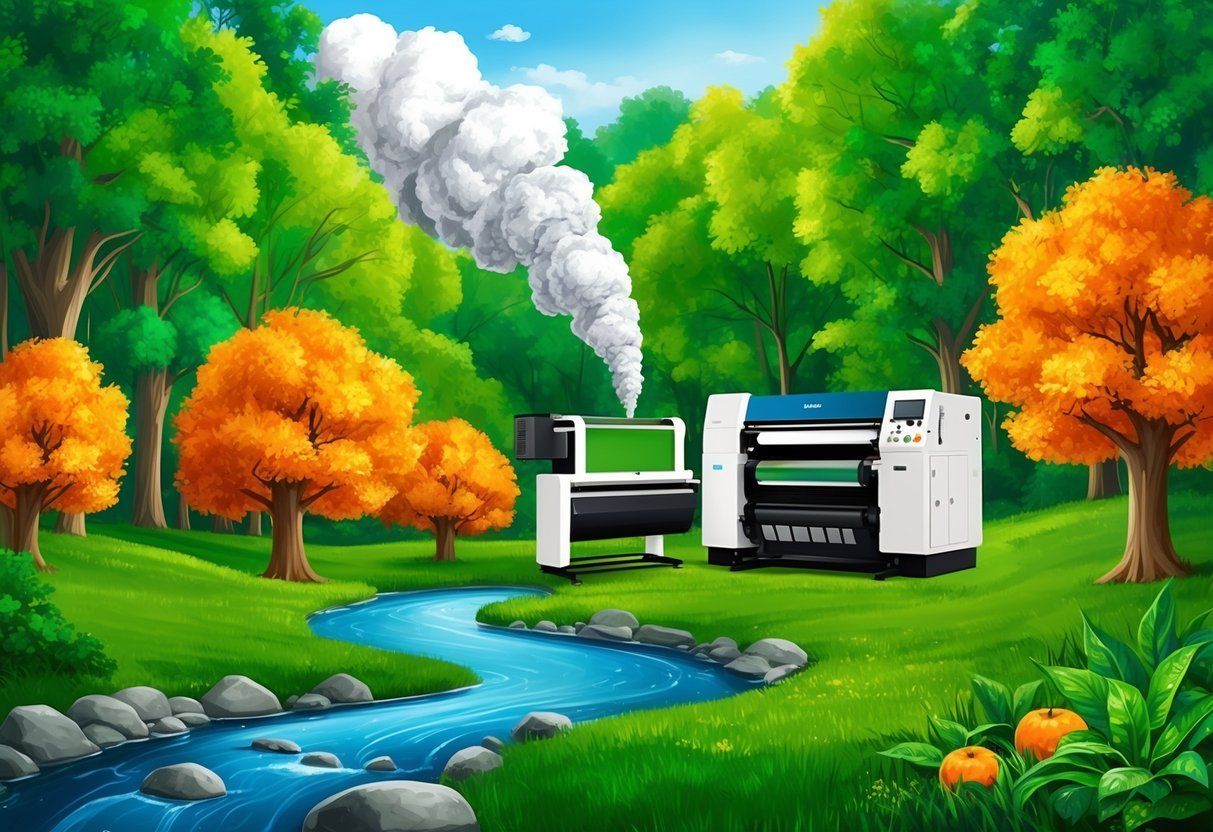
This section addresses common questions about eco-friendly printing practices. It covers best practices, sustainable materials, and how companies like Main Graphics support green initiatives.
What are the best practices for eco-friendly printing?
Best practices include using digital printing when possible, reducing waste, and choosing non-toxic inks. Reducing paper usage through double-sided printing also helps.
Companies should consider print runs carefully to avoid excess.
Which sustainable materials are utilized in green printing?
Sustainable materials include recycled paper and biodegradable inks. Some companies use soy-based inks, which are less harmful to the environment.
Eco-friendly packaging materials are also important in the printing process.
How does Main Graphics implement environmental responsibility in their printing processes?
Main Graphics uses energy-efficient printing machines and sources materials from local suppliers. They prioritize waste reduction by recycling and reusing materials.
Commitment to continuous improvement in environmental practices is a core value.
Can recycling be incorporated into the printing industry, and if so, how?
Yes, recycling can be part of the printing industry. It involves recycling paper waste, ink cartridges, and even old printing plates.
Establishing partnerships with recycling firms can help facilitate this process.
What certifications should a green printing company in Orange County have?
A green printing company should have certifications such as FSC (Forest Stewardship Council) and SFI (Sustainable Forestry Initiative). These certifications show a commitment to sustainable forestry practices. ISO 14001 certification for environmental management is also beneficial.
How do green printing initiatives affect the overall cost of printing services?
Green printing initiatives can influence costs, but they often lead to savings over time.
Sustainable materials may have higher upfront costs but can reduce waste.
Companies may also find that eco-friendly practices attract more customers, balancing expenses.…
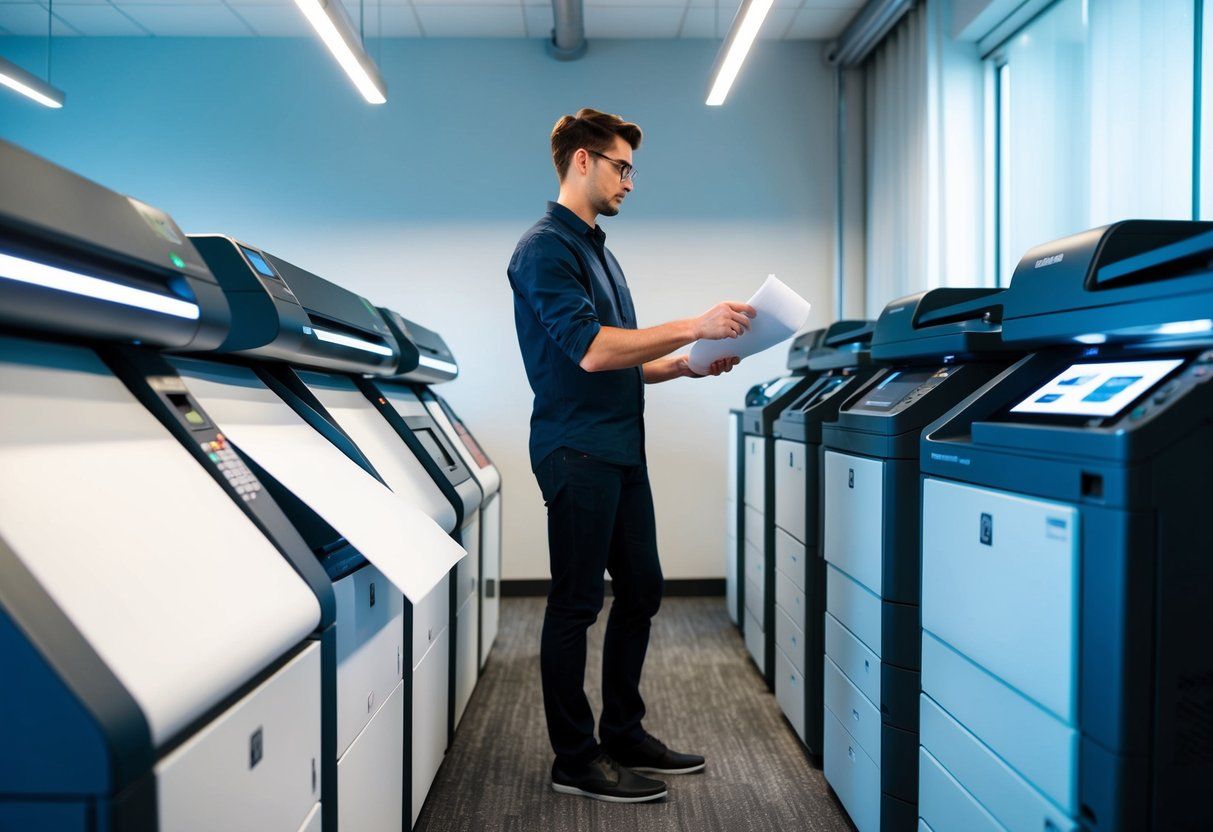
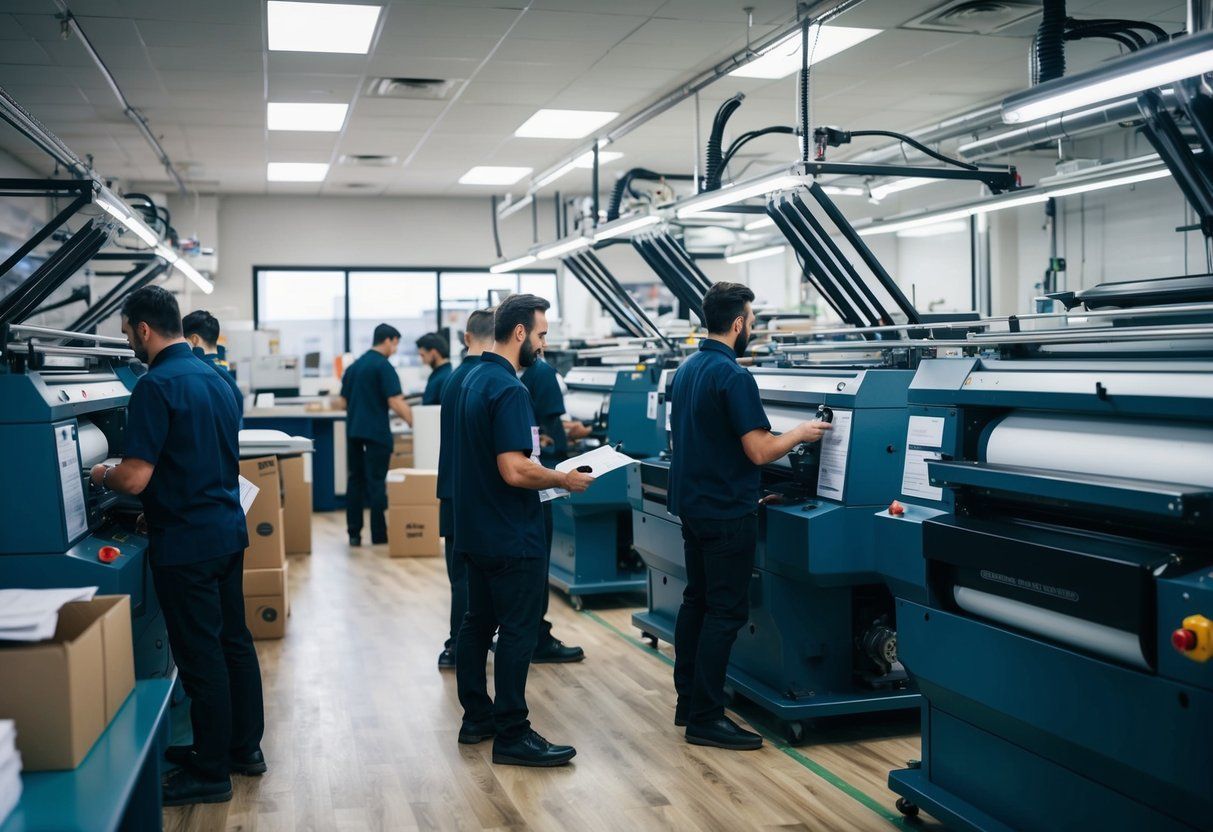
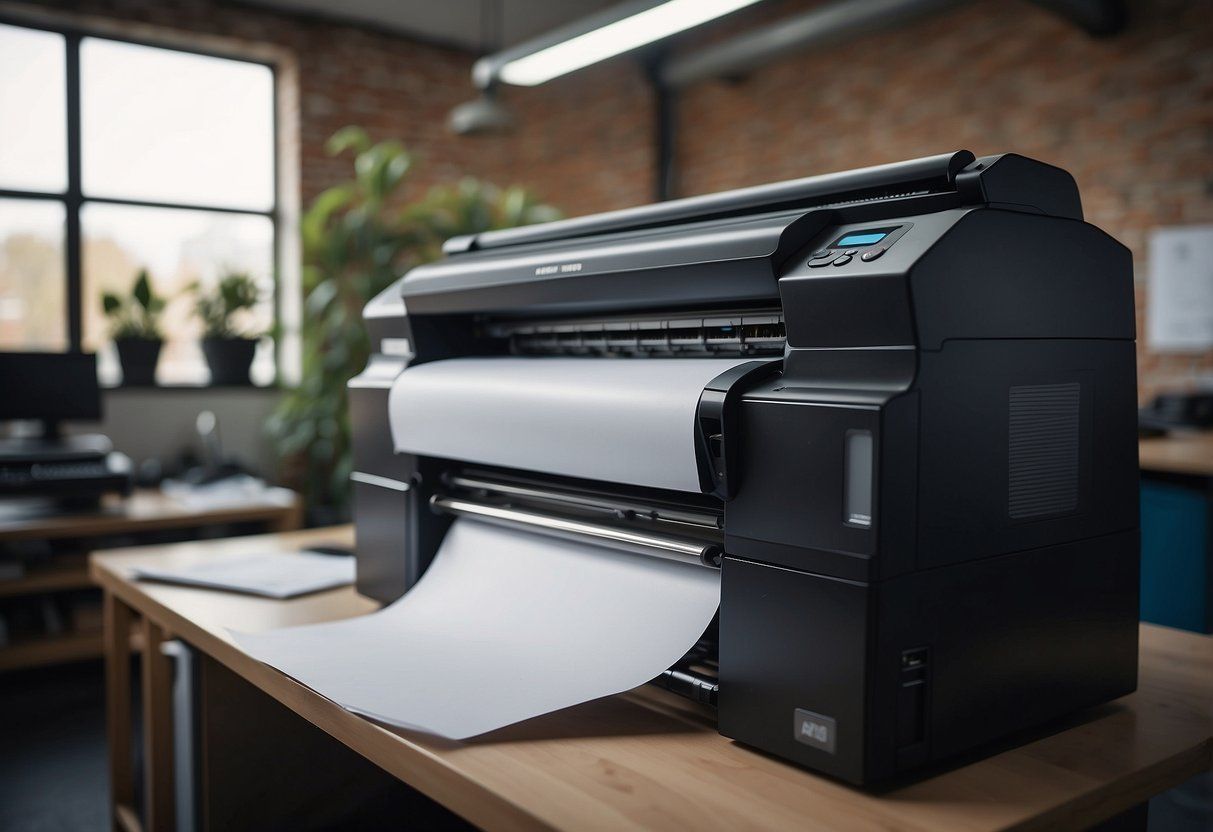
Ready to get started?
Call Main Graphics at 949-788-6100 For Your Free Consultation With A Printing Expert!
Get A Free Quote
All Rights Reserved | Main Graphics


